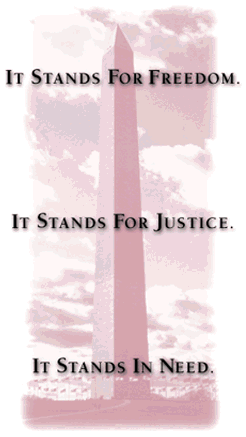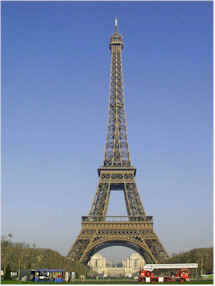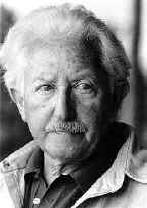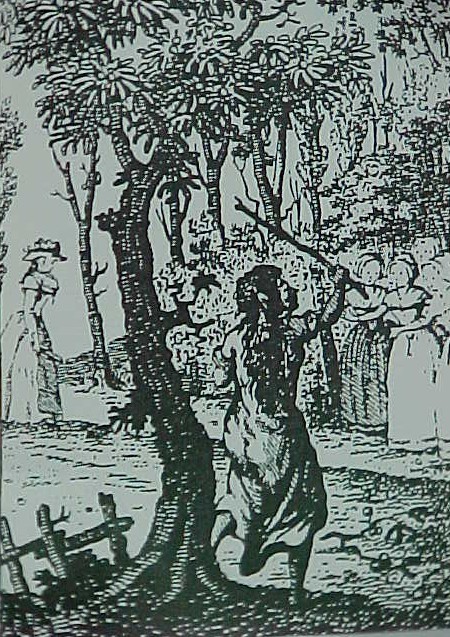|
Links |
|
Links |
|
| - Project: Identifying a Culture |
|
||
| - Project: The Intersections of KBVN |
|
||
| - Project: Real & Ideal Culture |
|
||
| - Project: Video: What Is Culture? |
|
||
| - Video: What Is Culture? 12:00 |
|
||
|
|
- Project: Video: The Social Orgs of Culture |
|
|
| - Video: The Social Orgs of Culture 2:07 |
|
||
| - Video: The Spiral Jetty 8:26 |
|
||
| - Video: Norms & Conformity 6:53 |
|
||
| All societies have a culture | |||
|
|
Culture may be defined as the shared content of society | ||
| Culture is the shared knowledge, beliefs, values, norms ( K B V N ) & the physical & abstract manifestations of that content | |||
| The FOUR components of culture are knowledge, beliefs, values, norms ( K B V N ) | |||
| Culture is the shared set of meanings that are lived through material & symbolic practices, & the socially created objects of everyday life | |||
| Do not confuse the common usage of the word "culture" w/ the sociological use | |||
| People commonly use culture to mean society &/ subculture & this usage would include both culture ( KBVN ) & social structure ( PF REG M CEML ) | |||
| When examining Culture, KBVN are often expressed in SEVEN configurations
Roles Language Technology Customs Material Objects Religion Groups of People |
|||
| Social sciences on culture & cultural mapping | |||
| 1. Sociologists examine how cultures are created & maintained in modern society & how culture impacts social structures & personality | |||
| 2. Anthropologists examine how cultures are created & maintained in ancient &/ indigenous societies | |||
| 3. Geographers examine how place & space shape culture & vice versa & how culture is organized spatially | |||
| 4. Psychologists examine how the subconscious is manifested in culture | |||
| 5. Political scientists examine how culture affects govt & the political process | |||
| Sociologists generally accept TWO human manifestations of culture: material & non-material culture which occur in the TWO settings of the physical environment & the human environment | |||
| All the levels meld into one seamless culture:
1. Material culture a. Material culture & the physical environment b. Material culture & the human environment 2. Non-material culture a. Non-material culture & the physical environment b. Non-material culture & the human environment |
|||
| 1. Material culture is manifested in material representations of KBVN |
|
||
| a. Material culture is manifested through the physical environment |
|
||
| The physical environment includes the "natural" environment as well as human made rural landscapes, city-scapes, etc. | |||
| Even the physical environment in which we live comes to be identified as a representative of our material culture & the environment does shape our KBVN | |||
| Usually different regions have a cultural attachment to their environment | |||
|
|
Examples of material culture & the physical environment | ||
|
|
b. Material culture is manifested through the human environment: | ||
|
|
1) World symbols: An example of a world symbol is the UN Building or the Earth picture | ||
|
|
2) National symbols: a nation's flag | ||
|
|
3) Regional symbols: race car | ||
|
|
4) Homes/ businesses styles: ranch home, mobile home, | ||
|
|
5) Cars, boats etc. styles: SUV, mini van, sports car, etc. | ||
|
|
6) Clothing styles: woman in a black dress, men in black | ||
|
|
7) Body shape / style: body art, | ||
|
|
2. Non-material culture is manifested in abstract representations of KBVN | ||
|
|
a. Knowledge is shared truth based on science | ||
|
|
b. Beliefs are shared truth based on tradition, religion, instinct, emotion, common sense | ||
| Knowledge & beliefs are like two intersecting circles w/ mutual & exclusive content | |||
|
|
c. Values are shared personal judgments/preferences about what is considered good/bad, like/dislike that serve as broad guidelines for social life | ||
|
|
Core American values have an ideal & a real Aspect; See the Table on the Ideal & Real Aspects of Core American Values | ||
| Ideal values are those that actors hold "patriotically," or rhetorically, that actors believe that they hold | |||
| Real values are those that actors actually practice; when faced w/ a "situation," actors show their real values | |||
| The concept of real values can be seen in the fact that Americans have the core cultural value of democracy, but fail to vote | |||
|
|
d. Norms are shared expectations about behavior, i.e. socially defined rules |
|
|
| i. Folkways are informal, minor norms that usually carry only minor & informal sanctions, or punishments, when they are violated | |||
|
|
Example: Manners | ||
| ii. Mores are informal norms, that are very important to people & may be written into law | |||
| Example: People should not talk loudly in religious buildings |
|
||
| iii. Laws are formal, codified norms which everyone is expected to be aware & which carry specific, legal sanctions | |||
| Example: driving regulations |
|
||
| Western cultural practices are exported by media to remote corners
of globe
Paul Harvey: Yet this is not “one world” |
|||
|
|
Culture's components of K + B + V + N, have limited intersections | ||
| Knowledge & beliefs are like two intersecting circles w/ mutual & exclusive content | |||
| WI Thomas on truth.... & culture: 'What we believe to be true, becomes true in its consequences' | |||
| Examples: men are buffoons
Cuban Missile Crisis: the Russians are offering a way out / the Russians are holding a hard line A clique believing someone is cool |
|||
|
|
We each have conflicting views on KBVN AOI which often create anxiety, cognitive dissonance, etc. on an individual level and conflict, strife, war, etc. on a societal level | ||
|
|
Non-material culture & the physical environment can be seen is the aesthetic question: "What is the meaning of wind whispering in trees to your culture?" | ||
|
|
Non-material culture & the human environment can be seen is the aesthetic question: "What is the meaning of a veiled face? of green hair?" |
Examples: mountains, ocean, corn fields
|
Physical objects representing non-material or abstract culture World Symbols National Symbols Regional Symbols Homes Cars, boats, planes, etc. Clothes Body |
Not many of these UN Building
|
National symbols US Flag
Some smaller items
|
 |
 |
Silo Mississippi River Empire State Building Cheese Potatoes Tobacco |
Shacks to Mansions to Castles |
Mini van to SUV to Harley to junker |
Clothing, like language, is so personal that it identifies your culture We use clothing to indicate respect ( in a ritual such as marriage, or funeral ) or disrespect |
Body image & decoration is becoming more & more malleable: We now idolize the thin, athletic body But less thin that the "Twiggy" days of the late 1970's Heavier men & women were preferred in earlier times Women have been subject to greater pressures to achieve the ideal body image than have men.... but is this changing? |
Abstract: the knowledge, beliefs, values & norms ( KBVN ) of a society a. Non-Material culture & the physical environment b. Non-Material culture & the human environment |
Physical Sciences
Knowledge is not absolute in that it changes from society to society
from year to year
|
General recognition of less truth validity There is no clear line btwn Knowledge & Beliefs |
We are generally unaware of what our values are unless we have gone
through training/coaching/therapy to "know thyself"
|
|
||||||
| Core American values: general consensus
( may conflict ) |
Ideal culture:
accepted in principle |
Real culture:
actually practiced |
||||
| 1. Freedom | Freedom for all; Freedom is our Number 1 Value! | We allow more freedom for a middle majority & the upper class, less for the others. Many groups have limited freedom | ||||
| 2. Democracy |
|
|
||||
| 3. Individualism |
|
|
||||
| 4. Responsibility |
|
|
||||
| 5. Religion/morality |
|
|
||||
| 6. Science/tech |
|
|
||||
| 7. Opportunity |
|
|
||||
| 8. Competition |
|
|
||||
| 9. Work ethic |
|
|
||||
| 10. Humanitarianism |
|
|
||||
| 11. Practicality |
|
|
||||
| 12. Nationalism |
|
|
||||
| 13. Romance |
|
|
||||
| 14. Sexuality |
|
|
||||
Folkways: manners, grammar, dressing appropriately Mores: littering to flag burning Laws: littering, flag burning, to robbery & murder We are not generally conscious of norms
We often can ponder the norm of a particular situation
|
K & B can be tested, but are not V & N are not recognized as vague |
The sum of our culture (knowledge, beliefs, values, rules [norms]) creates truth for each of us What people agree on is “the truth” WI Thomas: If people believe something is true, it becomes
real in its consequences.
We are not generally aware of what our culture is
|
We are generally not explicitly conscious of our KBVN We hold conflicting positions in relation to KBVN AOI But some people are more introspective about Attitudes Opinions Interests |
Humans definitely attribute abstract meanings to the physical environment As scientists, we cannot judge this, only try to understand it Durkheim delved deeply into this question: Some critics today decry our loss of connection w/ the environment & the mystical What is the meaning of an untouched forest?
|
As human influence & material creations grow, so does the amount of meaning we attribute to human made creations What is the meaning of a Ford Excursion? ( the largest SUV )
|



